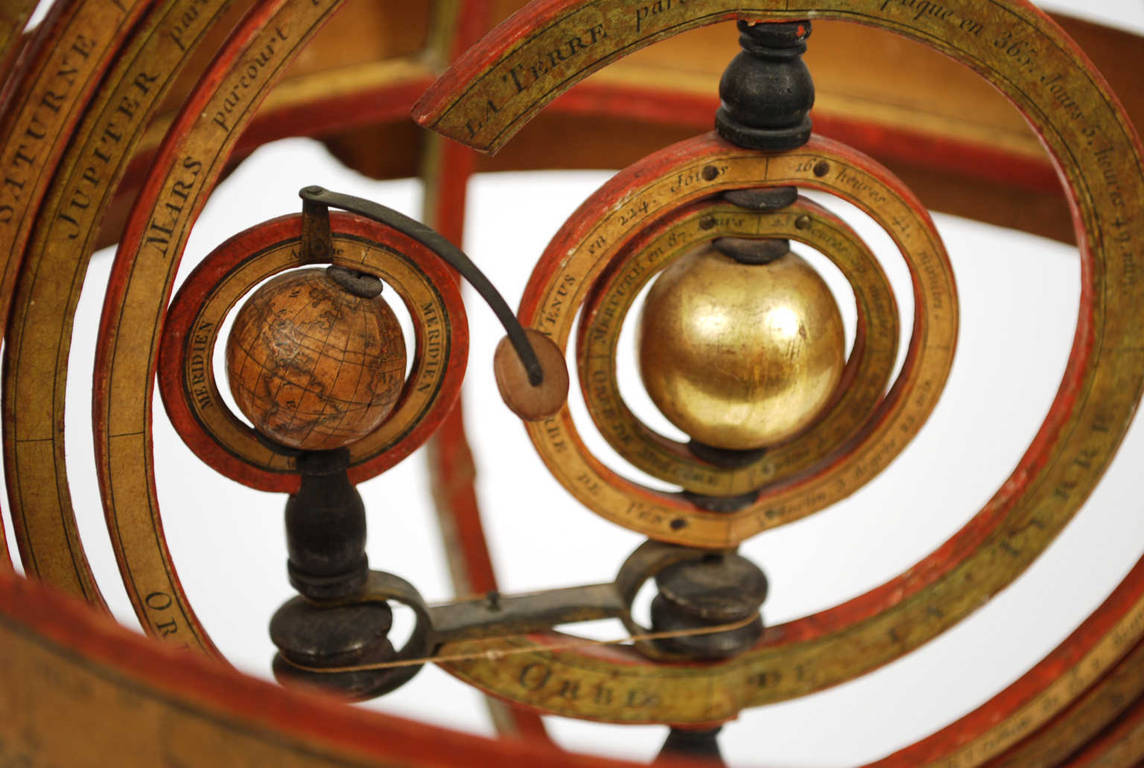antik.it/Natural-history/704a-Botanical-Model/
Code 704a
EUR 4500.00
In stock
1749485710Code 704a Botanical ModelDouble botanical model of the Field Maple flower made in Germany around the end of the 19th century by Robert Brendel (1821-1898). The flower is made of wood and papier-mâché and each is broken down into 3 sections and is mounted on a round ebonized wooden base with a label in the center describing its characteristics.
Good condition crack on one leaf
Measurements Height cm 45 -17.8 inches, flower diameter cm 25 -9.8 inches
Field Maple also called Loppio, Chioppo, Testuccio etc… Plant with a bushy and low crown, it can reach 2 to 30 meters in height. The trunk can often be branched in the lower-middle part.
It is a polygamous plant with unisexual and hermaphrodite flowers, there are about 150 species of Maple spread throughout Europe, Asia and North America.
In autumn, both in the woods and in botanical gardens, the color of the leaves of the Maples take on the captivating colors of autumn foliage, becoming a tourist destination, especially in the United States and Japan
Slow-growing plant used as a hedge as it resists animal browsing very well and is an excellent aid for integrated biological control, as well as having a high capacity to absorb carbon dioxide and fine dust.
The reddish wood is very resistant and is used for handles of tools and violins, in this regard the first to use a maple bridge to hold the strings of violins was Antonio Stradivari. In times past it was believed that maple was endowed with magical powers against witches and bad luck.
The Robert Brendel & Sons factory was founded in Wroclaw by Robert Brendel in 1866 with the production of botanical models of flowers, fruits and plants designed for the teaching of botany, creating a perfect fusion of science and art.
The need to create papier-mâché plant models arose from the difficulty of finding fresh material.
The business began with the production of models of medicinal plants, then at the suggestion of the director of the Institute of Plant Physiology at the University of Wroclaw, the first institute of its kind in the world, Robert Brendel extended production to include models of botany and plant anatomy in general.
The production technique started with the development of casts on which the model maker shaped the models using mainly papier-mâché.
The specimens produced were painted with tempera and polished with wax lacquers, each prototype was mounted to be supported by a rattan support and then inserted into a round wooden base that in the older models was painted black, while the bases relating to production starting from the early 1900s were made of light wood. A label was glued onto the base with the name in Latin and the vernacular name and in various languages, in addition to the serial number, the scale and other details.
This educational potential was adopted by many schools, resulting in significant improvements in both teaching and studying botany, compared to previous methods that were based on drawings or prints, or with the practice of dissecting real plants, with the resulting difficulty in terms of rapid decomposition.
Having three-dimensional enlarged models, faithful reproductions of real ones, greatly helped the study of plant anatomy. Over time, Brendel began to develop removable papier-mâché models. The use of hooks and small hinges allowed the pieces to be dissect and dismantled, significantly increasing the importance of teaching.
At the end of the 19th century, the Brendel Manufactory was famous and recognized worldwide. The models were exhibited and awarded in various world exhibitions, both in Europe and overseas. The catalogue included more than 300 different models.
It is likely that the definitive closure of the business originated with the approval of the racial laws during the Third Reich, as the Brendel family was of Jewish origin.
FAQ
Do you provide an authenticity certificate/expertise?
Of course! The legislative decree n. 42/2004 stipulates that who sells works of art or historical and archaeological items has the obligation to deliver to the purchaser the documents attesting to the authenticity of the object, or at least to submit the documents relating to the probable attribution and origin. Antik Arte & Scienza provides an expertise (as warranty) that contains a description, period and assignment or the author, if known, of the item.
How can I pay?
Secure payments by PayPal, credit card or bank transfer.
What are the shipping terms and the delivery schedule?
Shipping by DHL or UPS is free (but if we are shipping to a country non-EU remember that any taxes and customs duties are on your expense), and items will be sent just after receiving of payment.
Italy: delivering on the average in 24 h.
Europe: delivering on the average in 2/3 weekdays.
Other countries: delivering on the average in 5 weekdays; custom duties charged to the buyer.
Is shipping insured?
Of course! Free insurance by Lloyd's London that covers almost all destinations.
If I change my mind, can I return the item?
Of course! (see our general terms for more information).
e-Shop
Natural history
Code 704a Botanical Model
Antik Arte & Scienza sas di Daniela Giorgi - via S. Giovanni sul Muro 10 20121 Milan (MI) Italy - +39 0286461448 - info@antik.it - www.antik.it - Monday-Saturday: 10am-7pm





























